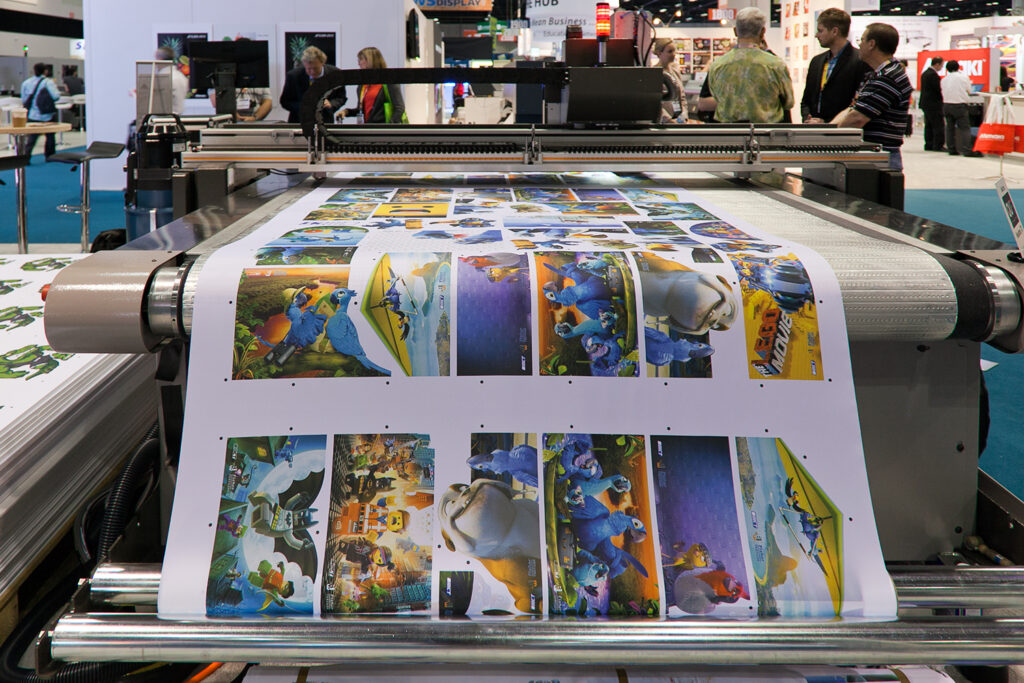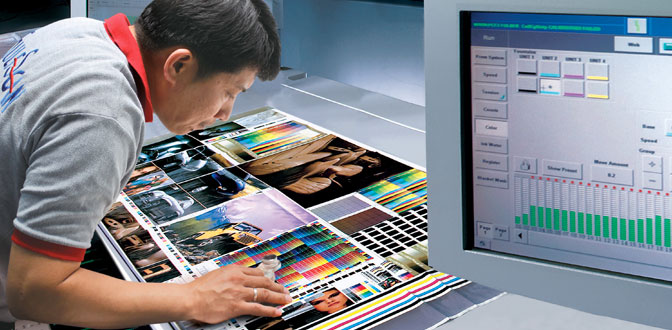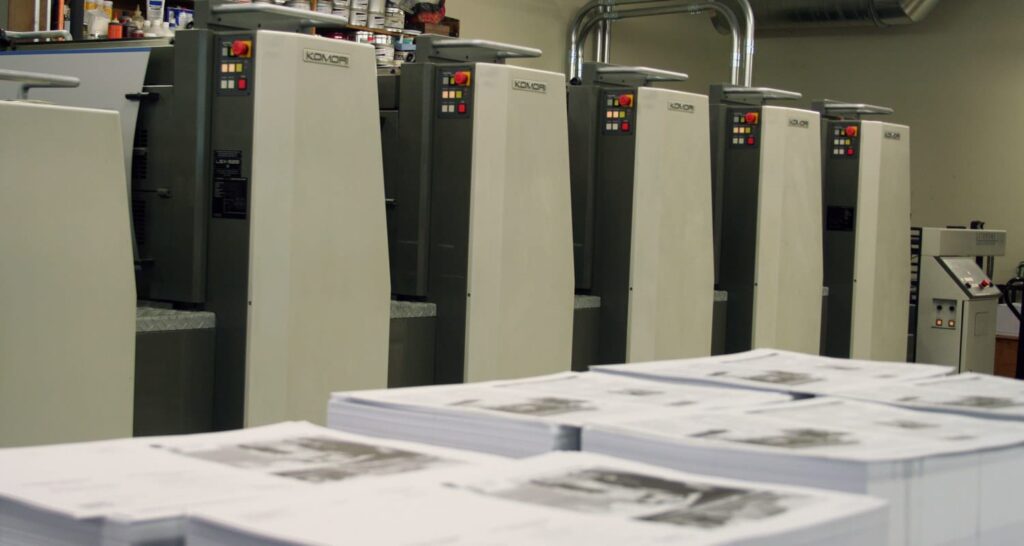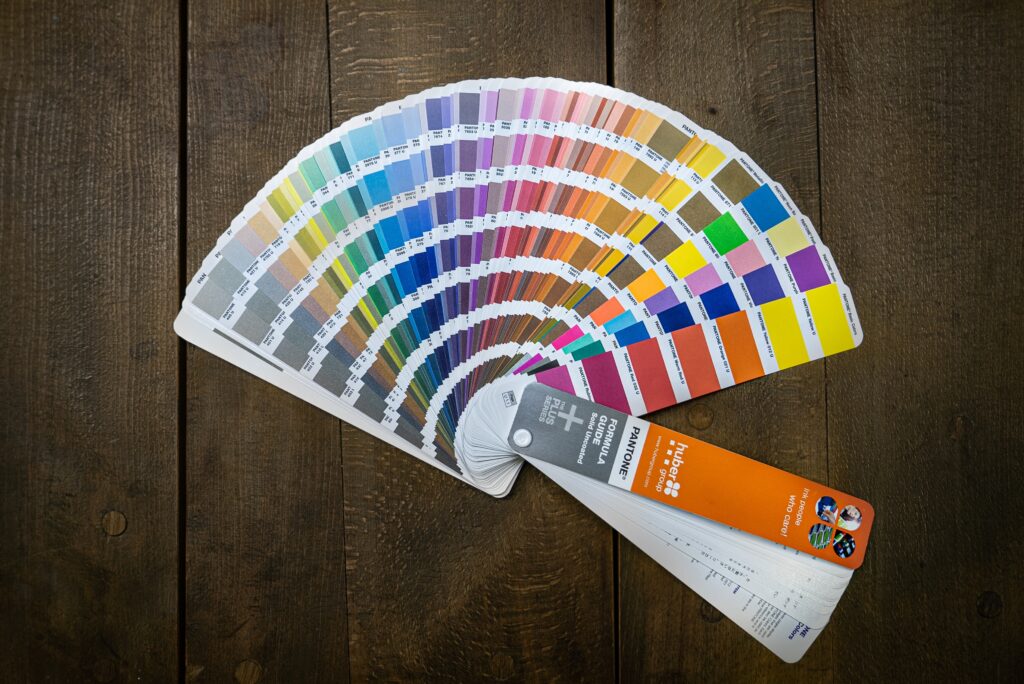To optimize something means to make the best use of it and gain the most profit or advantage from it.
When it comes to print quality, optimizing means applying the best printing procedures and graphic design methods to produce the greatest results possible.
This post will go over how to improve print quality by harnessing the advantages of offset printing and graphic design together with the use of spot colors.
Spot colors
Spot colors are unique ink colors that are added to the printing process.
This printing method differs from the normal four-color process, in which the printer uses cyan, magenta, yellow, and black (CMYK) to produce all of the required colors.
Pantone Color Formula Guides, which contain over 2300 ink colors, are used to make spot colors.
Pantone has developed a numbered system to designate each color, making it easier for designers and printers to communicate precisely what color they require.
There are many benefits with applying spot colors in the printing processes.

Spot colors are substantially more accurate than four-color processes because they use a single color ink rather than a combination of four colors.
This means that certain colors can be reproduced properly and consistently, as well as brighter and with more colorful colors.
Furthermore, unlike four-color printing, the color of the spot color ink is not impacted by the surrounding colors.
Print quality
When it comes to print quality, there are various factors that can influence the final outcome.
The quality of the graphics or images created for the printing process is the most critical component.
High-resolution graphics and photos are essential for attaining the finest outcomes.
When low-resolution graphics and photographs are printed, they can appear pixelated and blurry, lowering the overall quality of the project.
Therefore, high-resolution images are required for precise and crystal-clear printing.

The paper used in printing is another factor that influences print quality. The type of paper chosen can have a significant impact on the final product.
A high-quality paper can improve the colors and detail of printed artwork.
So, it’s critical to pick a paper that can withstand ink while still providing the appropriate texture and gloss for your project.

Finally, it is critical to think about the printing procedure. Different printing technologies provide various levels of print quality.
Offset printing is one of the greatest ways to achieve high-quality prints.
Offset printing presses can work with a variety of paper and ink types, producing clean, colorful prints.
Furthermore, offset printing can reproduce finer details and shading than digital printing, making it the favored method for high-volume commercial printing.
Offset printing
Offset printing is one of the oldest and reliable methods of printing.
It is frequently used to print huge quantities of documents such as brochures, periodicals, catalogs and paper-based labels and packaging.

One of the most significant advantages of offset printing is its adaptability.
It can print on a number of paper types, ranging from lightweight to heavy cardboard with a variety of finishes, and provides an ideal surface for spot colors.
Offset printing also produces high-quality prints with clear text, sharp images, and brilliant colors.
Its ability to manage gradient halftones makes it an effective printing technology for precisely replicating images.
In the printing industry, offset printing is thought to be far superior then some other alternative technologies such as digital printing.
Some really nice explanation about this printing technology in the form of infographic is given in the article “How Does Offset Printing Work? An In-Depth Guide”

Offset printing also has the advantage of being able to handle large-scale printing tasks.
This is due to the high cost of the printing press, as well as the cost of set-up and plate-making.
It is most cost-effective, however, when producing 1000 or more copies of the same print job.
And, because it uses Pantone colors, it’s ideal for producing printed goods with consistent color across the whole print job.
Graphic design
Graphic design plays a critical role in optimizing print quality.
It includes creating visual elements including layouts, artwork, and logos that effectively convey the desired message.

Here are several important graphic design components that can affect print quality.
Layout:
A print job’s overall appearance is significantly influenced by the layout of the designs.
Layouts that are simple and easy to understand can improve the readability of text and the appeal of images.
White space is used to make a layout look tidy and organized. Therefore, the graphic designer should optimize the print layout to make it simple to find and read the crucial information.
Typography:
Fonts can make a massive difference in a print job’s appearance, making it important to choose the right fonts and sizes.
The major goal is to make the font readable in both large and small sizes.
It is critical to select the appropriate font, size, and color for each section of the design and to keep the fonts constant across the design.
Color:
Color is a fundamental element of graphic design that deserves attention when optimizing print quality.
It’s important to select colors that match the brand’s values and effectively communicate the design’s message.
The Pantone Color Formula Guide can be used by designers to select spot colors for certain designs. The Pantone color will stay the same throughout the project in this way.

Conclusion
Print quality optimization is as much about the printing process as it is about the design itself.
Spot colors can be used to highlight the brilliant colors and create a cleaner print.
While a high-quality paper stock can provide the correct texture and feel, offset printing is the favored printing method because it can make high-quality prints with gradient halftones, precise text, images, and brilliant colors.
Graphic design is crucial in maximizing print quality, where clear and easy-to-follow layouts, proper font, and colors that fit the brand’s values are critical components to ensuring the best potential results.
When all of these factors are combined, they contribute to the greatest possible print quality that successfully communicates with the intended audience.